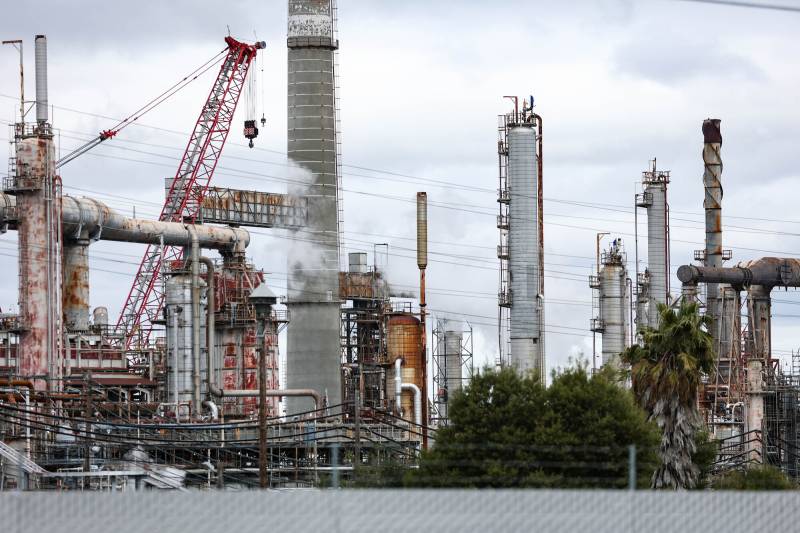Here are the morning’s top stories on Thursday, May 22, 2025…
- Governor Gavin Newsom is proposing an extension of the state’s landmark climate program known as cap-and-trade. The program limits greenhouse gas emissions and raises money from polluters. And the governor has some controversial ideas for how to spend that money.
- The US senate is moving ahead with plans to block California’s electric vehicle mandate. Late Wednesday night, Republicans sidestepped the filibuster and voted using a simple majority to clear a path to revoke California’s unique clean air rules.
How California Cap-And-Trade Works — And How Newsom Wants To Change It
Gov. Gavin Newsom’s proposal to reauthorize California’s cap-and-trade program has kicked off high-stakes negotiations over the state’s landmark climate initiative.
Cap-and-trade, which Newsom proposed renaming Cap-and-Invest last week, limits greenhouse gas emissions and raises billions of dollars annually through auctions where companies buy credits that allow them to pollute. But the system has come under fire, from both President Donald Trump — who targeted the program in an executive order last month — as well as progressives who argue it hasn’t been strict enough on oil and gas companies.
Extending cap-and-trade, which sunsets in 2030, raises key questions for state leaders: Should money raised from the program pay for environmentally-friendly projects or help Californians manage the mounting costs of climate change? Will key decisions about the emissions cap be made by state lawmakers, many of whom are just learning the intricacies of the program, or by unelected state regulators with deeper expertise?
Newsom is not advocating for any major alterations to the design of the program as he seeks to extend cap-and-trade to 2045. A Newsom spokesperson said he “is focused on the program’s stability in an increasingly uncertain world.” Newsom is seeking to change where cap-and-trade revenues are spent. The governor is proposing to set aside $1.5 billion — it could grow to $1.9 billion by the 2029–30 fiscal year — from the GGRF to pay for Cal Fire, which Newsom billed as a way to direct money paid by carbon polluters toward fighting fires made more powerful by climate change.
Senate Clears Way To Block Clean Air Standards In California
Senate Republicans on Wednesday voted to establish a new precedent that will allow them to roll back vehicle emission standards in California, including a rule phasing out the sale of new gas-powered cars by 2035.

